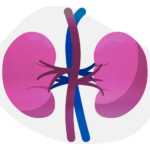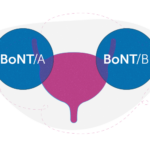Simulation-based training program improves evaluation of undescended testicles

Could a lifelike manikin torso help improve pediatricians’ understanding of undescended testicles? That’s the hope of Eric Bortnick, MD, a fellow in Boston Children’s Department of Urology whose new simulation- and video-based educational tool aims to improve the diagnosis and management of this condition.
Also known as cryptorchidism, undescended testicles are common congenital anomalies in which one or more of a baby’s testicles have not moved into the proper position. Prompt diagnosis through a thorough physical exam, typically followed by surgery, can help prevent future complications, such as fertility issues, hormonal problems, and testicular cancer. Yet research suggests that primary care physicians may not be comfortable or confident performing the exam and may not refer to a pediatric urologist within the recommended timeline of ages 6 to 18 months. In fact, many physicians report receiving little structured training around the exam.
Leveraging hands-on learning
Such findings inspired Bortnick to focus on improving education about undescended testicles in his thesis project for Harvard Medical School’s Master of Medical Sciences in Medical Education. Working with pediatric urologist Caleb Nelson, MD, MPH, he developed a 10-minute video about the diagnosis and management of the condition, which clinicians could watch at home. But he knew that the best way to learn is often by doing.
“We really wanted to leverage simulation so we could avoid having to rely on real patients,” explains Bortnick. He and Nelson consulted with Boston Children’s Immersive Design Systems to create a trainer — a realistic infant male torso that allows clinicians to identify normal testicles, retractile testicles, and palpable and nonpalpable undescended testicles.
Impressive — and lasting — results
Bortnick put the manikin and video training program to the test with 53 pediatric residents and attending physicians. After taking a baseline survey, the clinicians watched the video, which details the American Urological Association’s guidelines and includes a demonstration of the exam to evaluate undescended testicles. Next, they performed an in-person physical exam using the manikin, during which they received immediate feedback. They then took surveys about the experience, both following the exam and three months later.
The results were impressive: More than 90 percent of the physicians reported feeling more confident in their ability to perform the exam, diagnose an undescended testicle, document their clinical findings, and know when to refer to a pediatric urologist. In addition, three months after the training, 42 percent had decreased the number of ultrasounds they ordered for undescended testicles, and 33 percent referred patients to a pediatric urologist at an earlier age than before the training session.
Bringing the training to the masses
Based on their results, Bortnick and the team have applied for a provisional patent for the manikin and plan to expand the training program to other institutions. Already, they’ve presented it at a conference in Portugal and are holding trainings in Texas and Washington, DC.
“The delay in referrals for undescended testicles is a problem that’s been discussed for decades,” says Bortnick. “We feel we have a good educational strategy that can lead to a better understanding of their diagnosis and management.”
To learn more about the manikin and training program, please contact us through urologymanikin@childrens.harvard.edu.
Related Posts :
-

Undescended testicles: Why prompt referral is key
An estimated 3 percent of boys have undescended testicles at birth, making it a common problem encountered by pediatricians and urologists ...
-

At the forefront of kidney stone removal: Innovative approaches transform patient care
No longer considered just an adult problem, kidney stones increasingly affect children as well. The majority of children who cannot ...
-

Building a bladder-specific Botox
Botulinum toxins are bacterial neurotoxins that also have a range of therapeutic uses. In urology, injections of these potent substances ...
-

Predicting the best treatment for vesicoureteral reflux in kids: The power of machine learning
The result of abnormal formation of the normal valve between the kidney and bladder, vesicoureteral reflux (VUR) can lead to ...





